I am trying to develop a fast algorithm in python for finding peaks in an image and then finding the centroid of those peaks. I have written the following code using the scipy.ndimage.label and ndimage.find_objects for locating the objects. This seems to be the bottleneck in the code, and it takes about 7 ms to locate 20 objects in a 500x500 image. I would like to scale this up to larger (2000x2000) image, but then the time increases to almost 100 ms. So, I'm wondering if there is a faster option.
Here is the code that I have so far, which works, but is slow. First I simulate my data using some gaussian peaks. This part is slow, but in practice I will be using real data, so I don't care too much about speeding that part up. I would like to be able to find the peaks very quickly.
import time
import numpy as np
import matplotlib.pyplot as plt
import scipy.ndimage
import matplotlib.patches
plt.figure(figsize=(10,10))
ax1 = plt.subplot(221)
ax2 = plt.subplot(222)
ax3 = plt.subplot(223)
ax4 = plt.subplot(224)
size = 500 #width and height of image in pixels
peak_height = 100 # define the height of the peaks
num_peaks = 20
noise_level = 50
threshold = 60
np.random.seed(3)
#set up a simple, blank image (Z)
x = np.linspace(0,size,size)
y = np.linspace(0,size,size)
X,Y = np.meshgrid(x,y)
Z = X*0
#now add some peaks
def gaussian(X,Y,xo,yo,amp=100,sigmax=4,sigmay=4):
return amp*np.exp(-(X-xo)**2/(2*sigmax**2) - (Y-yo)**2/(2*sigmay**2))
for xo,yo in size*np.random.rand(num_peaks,2):
widthx = 5 + np.random.randn(1)
widthy = 5 + np.random.randn(1)
Z += gaussian(X,Y,xo,yo,amp=peak_height,sigmax=widthx,sigmay=widthy)
#of course, add some noise:
Z = Z + scipy.ndimage.gaussian_filter(0.5*noise_level*np.random.rand(size,size),sigma=5)
Z = Z + scipy.ndimage.gaussian_filter(0.5*noise_level*np.random.rand(size,size),sigma=1)
t = time.time() #Start timing the peak-finding algorithm
#Set everything below the threshold to zero:
Z_thresh = np.copy(Z)
Z_thresh[Z_thresh<threshold] = 0
print 'Time after thresholding: %.5f seconds'%(time.time()-t)
#now find the objects
labeled_image, number_of_objects = scipy.ndimage.label(Z_thresh)
print 'Time after labeling: %.5f seconds'%(time.time()-t)
peak_slices = scipy.ndimage.find_objects(labeled_image)
print 'Time after finding objects: %.5f seconds'%(time.time()-t)
def centroid(data):
h,w = np.shape(data)
x = np.arange(0,w)
y = np.arange(0,h)
X,Y = np.meshgrid(x,y)
cx = np.sum(X*data)/np.sum(data)
cy = np.sum(Y*data)/np.sum(data)
return cx,cy
centroids = []
for peak_slice in peak_slices:
dy,dx = peak_slice
x,y = dx.start, dy.start
cx,cy = centroid(Z_thresh[peak_slice])
centroids.append((x+cx,y+cy))
print 'Total time: %.5f seconds\n'%(time.time()-t)
###########################################
#Now make the plots:
for ax in (ax1,ax2,ax3,ax4): ax.clear()
ax1.set_title('Original image')
ax1.imshow(Z,origin='lower')
ax2.set_title('Thresholded image')
ax2.imshow(Z_thresh,origin='lower')
ax3.set_title('Labeled image')
ax3.imshow(labeled_image,origin='lower') #display the color-coded regions
for peak_slice in peak_slices: #Draw some rectangles around the objects
dy,dx = peak_slice
xy = (dx.start, dy.start)
width = (dx.stop - dx.start + 1)
height = (dy.stop - dy.start + 1)
rect = matplotlib.patches.Rectangle(xy,width,height,fc='none',ec='red')
ax3.add_patch(rect,)
ax4.set_title('Centroids on original image')
ax4.imshow(Z,origin='lower')
for x,y in centroids:
ax4.plot(x,y,'kx',ms=10)
ax4.set_xlim(0,size)
ax4.set_ylim(0,size)
plt.tight_layout
plt.show()
The results for size=500:

EDIT: If the number of peaks is large (~100) and the size of the image is small, then the bottleneck is actually the centroiding part. So, perhaps the speed of this part also needs to be optimized.